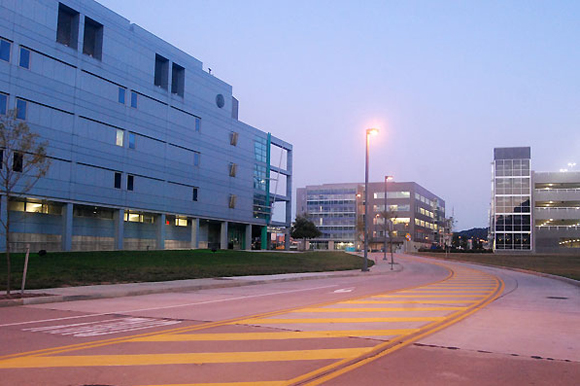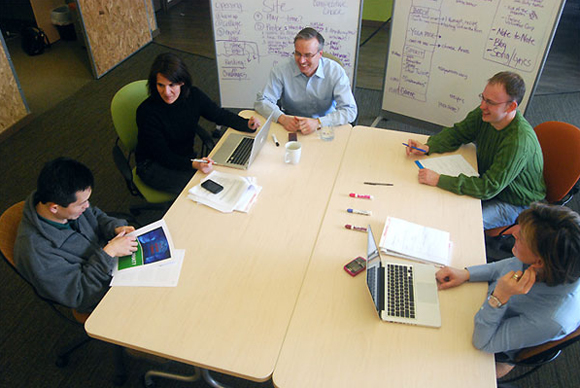Editor's note: This article first appeared in sister publication Pop City.
Pittsburgh is beginning to restore its long-dormant reputation for innovation and entrepreneurial excellence.
It was here that high-profile entrepreneurs the likes of Andrew Carnegie and George Westinghouse built companies that came to define entire industries and generate vast wealth. But the region's emergence as an industrial center came at a price: a large-company mentality took hold and lingered for decades, even as the foundations of its manufacturing economy began to crumble.
As recently as the 1980s, the notion of working for a large, stable company was more socially acceptable than risking failure by starting a company. That attitude has begun to change, and Pittsburgh's entrepreneurial spirit is stirring anew. Hundreds of startups have emerged in recent years, producing everything from medical devices to data storage equipment to online shoe-fitting software.
The success of tech startups such as FORE Systems and FreeMarkets in the late 1990s demonstrated that new companies could thrive in a post-industrial Pittsburgh. And the sale of those companies ushered in a new generation of investors and spawned new firms.
Pittsburgh still has a long way to go. Its venture capital market remains a fraction the size of those in Silicon Valley or Boston. Its labor market, while teeming with talented computer programmers and engineers, lacks sufficient numbers of sales, marketing and senior management personnel who can transform ideas and inventions into successful businesses.
And while raising capital can be difficult anywhere, some entrepreneurs have found it exceptionally hard in Pittsburgh, particularly in securing a first round of institutional funding. That's been compounded by the economic downturn and a slump in the venture capital industry.
Despite barriers, investors and entrepreneurs agree Pittsburgh has made tremendous strides in business creation. Technology flows more freely from universities. Economic development agencies actively assist startups. And the city's image has improved, burnished by the G20 summit and top rankings in quality-of-life surveys.
While location alone doesn't determine the success or failure of a startup, Pittsburgh presents certain distinctive challenges and advantages to entrepreneurs hoping to become the next Carnegie or Westinghouse.
Modest Numbers
As a market for venture capital, Pittsburgh remains relatively small. From the the third quarter of 2010 through the third quarter of 2011, Pittsburgh has attracted $149 million, ranking it eighth among 18 benchmark regions at Pittsburghtoday.org – and far behind the leaders – Silicon Valley with $7.971 million and Boston with $2.266 million.
“We're not a Silicon Valley, we're not a Boston,” said Bill Newlin, chairman of Newlin Investment Company in Sewickley, “but we are significant and we have significant opportunities. We have crossed the threshold into where there are significant investment opportunities in this area and there is an important entrepreneurial base.”
Frank Demmler, vice president of entrepreneurial services at Innovation Works, a state-backed agency that funds and advises startups, said a surprising number of out-of-town investors have begun putting money into local companies. That trend, he said, will be “essential in the coming five to 10 years because of the dearth of venture capital that's freely available today.”
Nationally, the venture capital industry has undergone dramatic changes. Total investments soared from $7.3 billion in 1995 to $99.2 billion during the Internet boom in 2000, then plummeted to $18.9 billion by 2003.
“When I look at the data for western Pennsylvania, it's been pretty consistent,” said Mark Heesen, president of the National Venture Capital Association. “It's followed national trends, but the numbers are not huge.”
Size and Scope
Entrepreneurs seek funding from any number of sources to launch their businesses: family and friends, wealthy individuals, second mortgages, even credit cards. But venture capital – professionally managed money that's invested in new enterprises at considerable risk – often plays a critical role in the development of emerging businesses, helping them grow and hire workers.
In Pittsburgh, the market for venture capital remains relatively small. Still, Pittsburgh's venture capital market has grown substantially over the past 15 years, and the rise of certain types of companies – particularly in the software, networking and equipment, and medical device industries – has shaped the city's post-industrial entrepreneurial economy.
Pittsburgh has received far more venture capital over the past decade than many of its Rust Belt peers, such as Cleveland or Detroit. Yet relatively few venture capital firms are based here or focus on the region. Among them are Adams Capital Management, Birchmere Ventures and Draper Triangle Ventures.
Venture capitalists say the lack of locally based capital has meant entrepreneurs have had to rely on sources outside the region. And in some cases they've been forced to move their headquarters out of Pittsburgh to be closer to deep-pocketed investors, who prefer to have the companies they sink money into nearby.
“When a big West Coast fund comes and drops a 30 million dollar check in your lap, but you've got to move to Seattle or you've got to move to San Francisco to take it, that's a pretty tough offer to fight with,” said Sean Sebastian, a managing partner at Birchmere Ventures.
Jay Katarincic, a managing director at Draper Triangle Ventures, said the amount of native capital is “not in great shape right now. I think it's really scary for Pittsburgh. You'd hate to see all the work we've done go away because we don't have capital to keep these companies.”
Shifting Focus
Local venture capital investments have shifted dramatically over the past 15 years, following national trends. They climbed sharply between 1995 and 2000, as the Internet bubble grew, from $2.7 million to $836.3 million, before tumbling to $345.8 million the following year, after the bubble burst. By 2005, local venture capital investments had dropped to $66.7 million.
Investments jumped to nearly $234 million the following year, then declined for three consecutive years to $97.9 million in 2009 before rebounding in 2010 to $161 million and $143 million in 2011.
As the amount of venture capital has grown on average in recent years, the types of companies that have gotten the largest investments reflect the changing complexion of Pittsburgh's entrepreneurial scene.
“We're really known for our computer science capability, enterprise software, some Internet, health care, IT … biotech, medical devices, robotics,” said Craig Gomulka, a former venture capitalist and chief investment officer at Innovation Works. “We have carved niches out where people believe we are leading innovation.”
From 2000 through 2003, software companies garnered the largest number of venture capital dollars, with 37 firms receiving $254.23 million, followed closely by networking and equipment companies and media and entertainment firms.
During the next four years, six industrial and energy companies received the largest share, with a total of $150.6 million, followed by software and medical device compa
nies.
Medical device companies got the most venture capital from 2008 through the first three months of this year, with 37 firms receiving a total of $173.71 million. They were followed by software and electronics and instrumentation firms.
Overall, software companies have gotten the largest share of venture capital money in Pittsburgh since 2000, with 98 firms receiving a total of $474.2 million. That's about 19 percent of the total $2.47 billion invested in the Pittsburgh market during the same period.
They were followed by six networking companies – providers of data communication and fiber optics products and services – that received a total of $318 million, and 50 medical device companies that won a total of $315.9 million.
“We don't have a lot of the social media-type companies that we've seen recently be very, very successful,”said Draper Triangle's Katarincic.
That's because starting the next great Facebook-type company would be “too easy to do, frankly,” said Sebastian, of Birchmere Ventures. “I want to build a company that I'm not going to see 20 look-a-likes pop up. So we're doing semi-conductors for fiber optic networks, we're doing in-home renal equipment, cancer diagnostics companies, things that are very, very difficult to copy.”
Stages of the Cycle
Most of the venture capital invested in Pittsburgh since 2000 has consisted of expansion funding, which is put into companies that have products or services on the market and have shown revenue growth, but may not be profitable.
Since 2008, however, the largest percentage – about 45 percent – has gone to later-stage companies with products widely available and that are likely to have turned a profit. Those firms pose less risk for investors, who say they've had to conserve capital amid the economic downturn.
Some of the capital that's nourished local startups came from other startups that grew and were acquired, producing ranks of newly wealthy individuals, or angel investors. Among the best known are FORE Systems, an Internet switching equipment maker bought in 1999 by Great Britain's General Electric Co. PLC for $4.5 billion, and FreeMarkets, a provider of software as a service over the Internet, which was sold to Ariba in 2004 for $493 million.
But post-industrial Pittsburgh hasn't been defined by a particular company, said to Mark Heesen, who lived in the city in the 1970s. “Pittsburgh does not have that one technology, and it also does not have what I would say is a star graduate, a company that was a huge success and has grown into a public company that has remained in Pittsburgh.”
But the trends and conditions for nurturing startups today are “quite positive,” said Joel Adams, general partner at Adams Capital Management, the largest locally based venture capital firm. “I've been doing this 25 years here. The best companies we've ever had in Pittsburgh are right now.”
PittsburghTODAY is an independent information nonprofit; its work, including statistical comparisons of Pittsburgh to 14 other regions, can be found at PittsburghTODAY.org.
Photographs copyright Brian Cohen
Technology Park on Second Avenue
Steel was once the powerhouse of the Pittsburgh economy
At typical meeting at Innovation Works
The Golden Triangle







